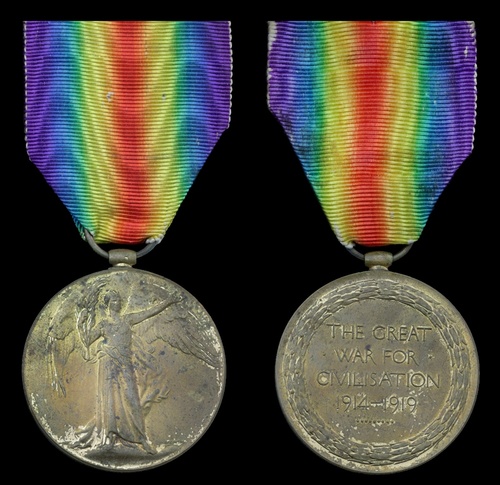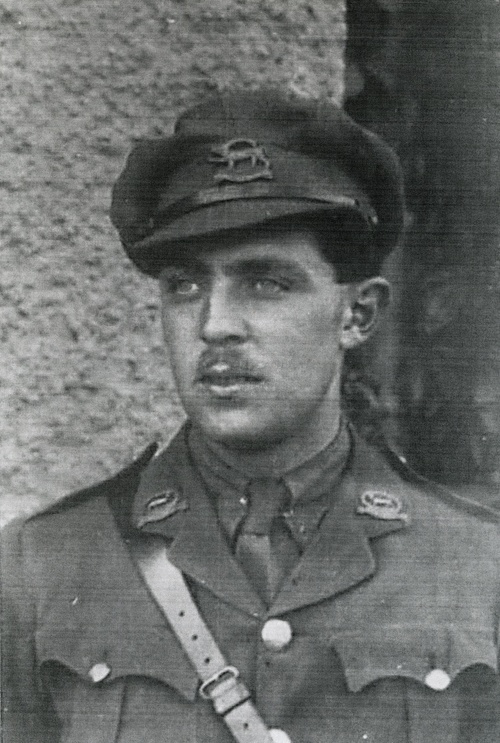Auction: 19003 - Orders, Decorations and Medals
Lot: 96
The Victory Medal awarded to 2nd Lieutenant C. W. Palmer, Leicestershire Regiment, attached Royal Flying Corps, who was the 9th victory of German 'Ace' Max Immelmann, shot down whilst flying a Morane biplane as Acting Flight Commander of No. 3 Squadron on 2 March 1916
Palmer's Observer was killed outright whilst he was wounded in the foot, an injury that required swift amputation by a German surgeon - he suffered a lingering death as a result of blood poisoning some three weeks later
Victory Medal 1914-19 (2. Lieut. C. W. Palmer.), very fine
Charles Walter Palmer was born on 2 October 1891 at Coventry, the eldest son of George Alfred Palmer, a poultry breeder, and educated at Hinckley Grammar School. Having enlisted and served in 'D' Company of the 8th Battalion, Duke of Cornwall's Light Infantry, Palmer was commissioned 2nd Lieutenant in the 9th Battalion, Leicestershire Regiment and served in France from 9 December 1915. He had already expressed an interest in joining the Royal Flying Corps, earning his Aviator's Certificate (No. 1497) on 24 July 1915. Transferred to No. 3 Squadron, Palmer was a senior pilot and Acting Flight Commander at the time of his loss on 2 March 1916. Under the Guns of the German Aces takes up the tale:
'Immelmann was patrolling more than sixty miles behind the front and saw what he initially thought was a British machine being pursued by a Fokker. Closer inspection revealed both the machines as British - a Morane two-seater under the protection of a Morane N. The No. 3 Squadron machines had taken off at 0740 with Sergeant T. P. H. Bayetto, flying the single-seater, charged with the responsibility of escorting and protecting the slower machine on a long reconnaissance to Lille, Valenciennes, Donay, Pont-a-Marcq and Mons-en-Pevele. Bayetto later reported seeing the first Fokker (Immelmann's) then four more. As the Sergeant Pilot dived to engage one of the enemy machines, Immelmann took the opportunity to come down on the two-seater, quickly despatching it to destruction near Somain.'
His Observer, Lieutenant Herbert Frederick Birdwood, a nephew of General Sir George Birdwood, was killed outright, while Palmer was severely wounded in the foot. He somehow managed to crash-land his kite, going into German hands. Such were the severity of his wounds that they required the amputation of his foot on 28 March, which at first seemed successful. Recovering from the ordeal the next day, he wrote home with high hopes but it seems blood poisoning had set in and Palmer died that evening, aged just 24. He is buried in the Douai Communal Cemetery, while his effects comprising a watch, purse, cigarette case, keys and patent pin were returned to his family; sold with copied service record, research and MIC.
Subject to 20% VAT on Buyer’s Premium. For more information please view Terms and Conditions for Buyers.
Sold for
£400
Starting price
£180







